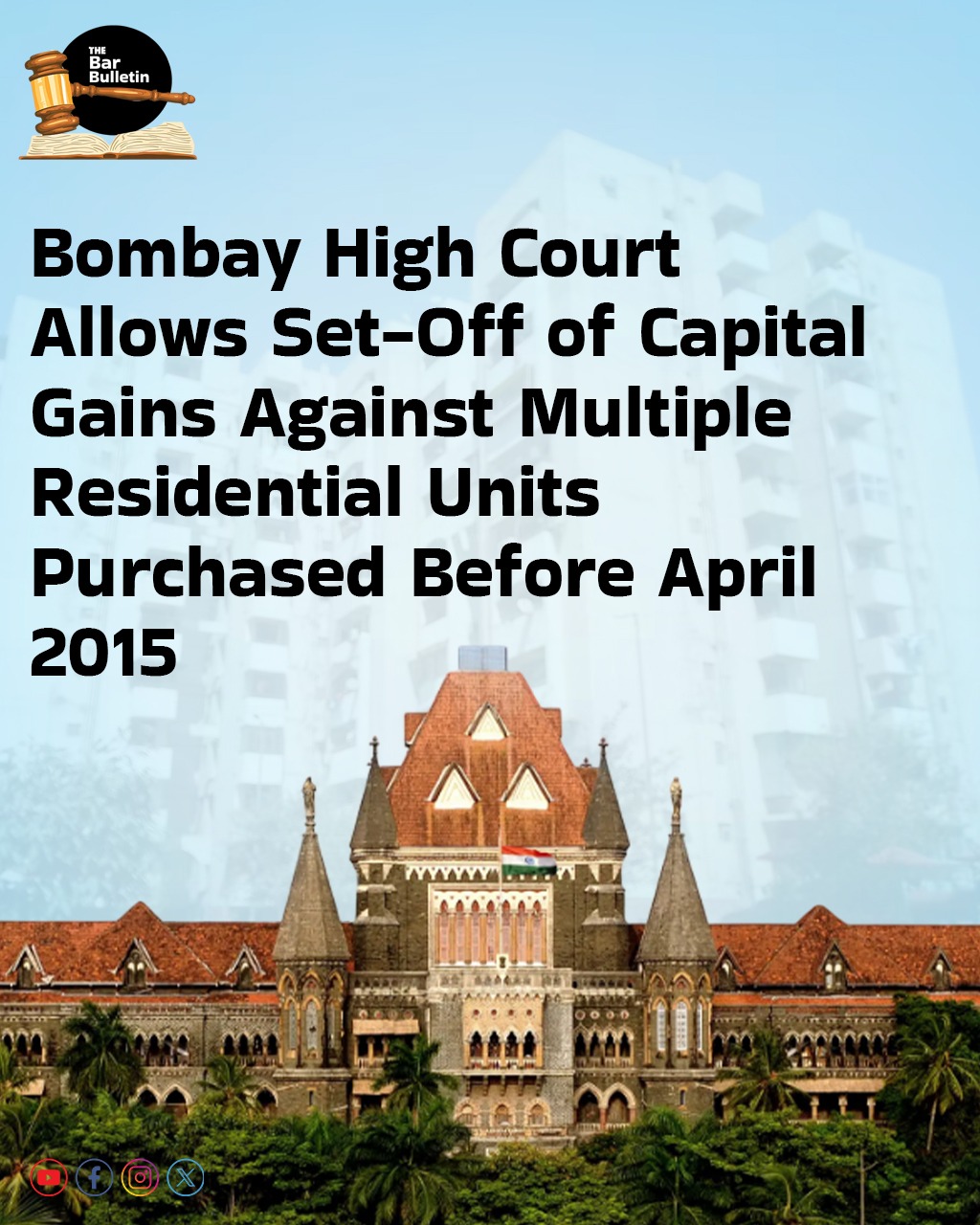The Bombay High Court held that prior to April 1, 2015, an assessee could claim exemption under Section 54 of the Income Tax Act, 1961, even if the capital gains were invested in the purchase or construction of more than one residential unit. The Court ruled in favour of the assessee who had used the proceeds from the sale of his Mumbai flat to invest in the construction of seven row houses in Pune.
A Division Bench comprising Chief Justice Alok Aradhe and Justice Sandeep V. Marne clarified that the expression “a residential house” in the unamended Section 54(1) was not restrictive and included multiple residential units. The Bench contrasted the pre-amendment and post-amendment positions, observing that the Finance (No. 2) Act, 2014 substituted the words “a residential house” with “one residential house,” thereby making the restriction applicable only prospectively from April 1, 2015.
In the case at hand, the appellant had entered into a joint venture agreement with Samant Estate Pvt. Ltd. for the construction of a residential project at Pune, resulting in the allotment of seven row houses. He invested the full capital gains of ₹1.08 crore from the sale of his Mumbai property into this project. However, during assessment proceedings, the exemption under Section 54 was denied on the ground that it applied only to investment in one residential unit. The Income Tax Appellate Tribunal (ITAT) partly allowed his appeal, directing the Assessing Officer to consider only one row house as eligible for exemption under Section 54.
On appeal to the High Court, it was held that prior to the legislative amendment effective from April 1, 2015, there was no statutory bar on claiming exemption for investment in multiple units. The Court emphasized that Section 54(1) is a beneficial provision, aimed at promoting housing, and where two interpretations are possible, the one favouring the assessee should be adopted.
Noting that the assessment year involved was 1995–96 and the investment predated the amendment, the High Court held that the appellant was entitled to exemption on the entire capital gains invested across the seven row houses. It also stated that the use of different addresses for the houses did not alter the legal position so long as the investment was made out of the same sale consideration.
Appearances:
Appellant: Advocates Nishant Thakkar, Jasmin Amalsadwala, and Bhavesh Bhatia
Respondent: Advocate Akhileshwar Sharma

